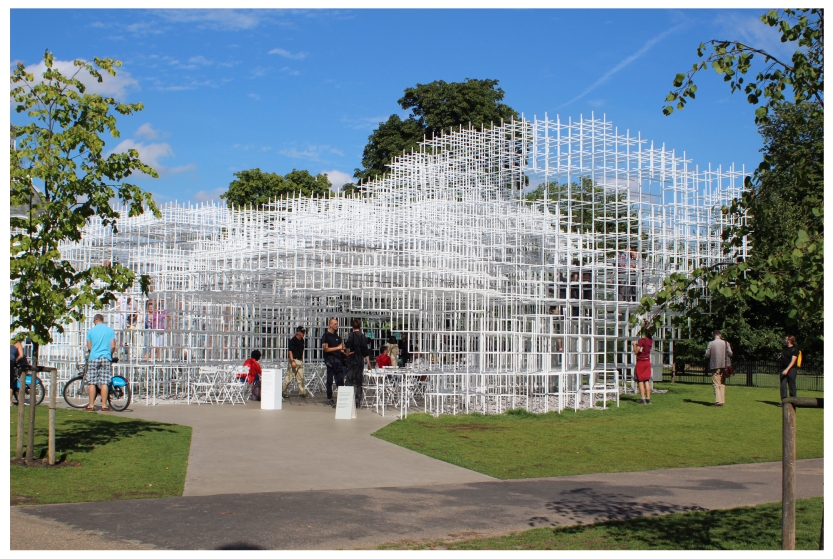
Building Study 005: The Serpentine Pavilion, 2013. Sou Fujimoto.
The Serpentine Gallery, in Hyde Park in London, commissions an architect each year to design a temporary pavilion – to sit on the lawn outside the neo-classical gallery throughout the summer. In 2013 the pavilion was designed by Sou Fujimoto.
The ‘building’ comprised a delicate network of cubes, assembled to give an organic montage of form and space. The cubes were 800mm in each direction, formed in 20mm steel bar sections, and all painted white.

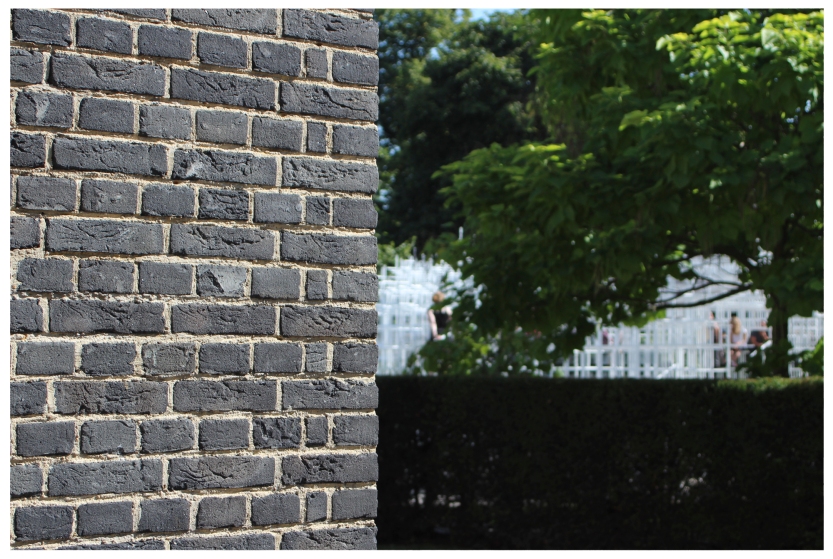
The pavilion challenged my preconception of what a ‘building’ is. There were no tangible walls; and no roof. Instead of conventional architectural elements the pavilion (and the spaces around it) were (in)formed by the vague, amorphous mass that was created by those steel cubes. It was a building which enclosed a kind of negative, ‘void’ space – it invited, and required, investigation and interpretation.
The essential idea was to interrogate how the building could affect and contain the space(s) around it – “encasing an infinite domain”1. There was no ‘inside’, or ‘outside’. There was no edge. The articulation between the building and the park was consciously blurry.
“Architecture is not simply about making interior space, nor about exterior space, but to generate relationships between the two”2 (Sou Fujimoto).
The way the cubes were assembled in the pavilion gave varying levels of density. Some of the ‘heavier’ parts created places for sitting or climbing; while larger voids beneath the cubes created places for gathering and meeting. But in all these spaces, there was a consistent, tangible visual connection with the landscape of the park – in other words, one was always able to see the trees.
Apparently, the design was fine-tuned by the architect and his team one cube at a time, to give the optimum combination of mass and light – in relationships of solid to void; of enclosure to openness3.
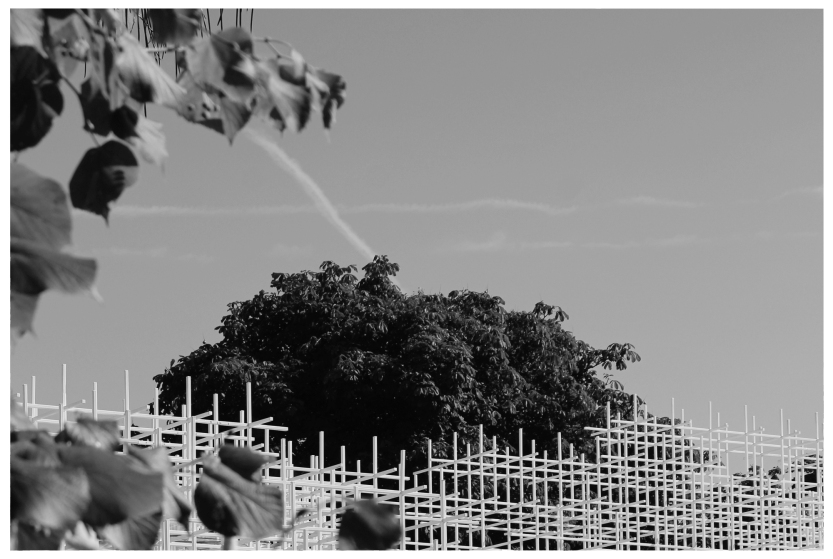
Consideration was given to maintaining adequate protection from the weather, and for the safety of people moving through, under, and over the pavilion – but that pragmatism didn’t undermine the compelling, poetic aspirations of the design.
The white colour, and cubed forms, sat in confident juxtaposition to the park landscape – giving a pleasing aesthetic tension. That visceral energy between what is ‘made’ and what exists naturally created a delightful and engaging atmosphere in and around the pavilion.
The 2013 Serpentine Pavilion was a brilliant (albeit temporary) exemplar of Sou Fujimoto’s architectural agenda, which can be characterised by a determination to develop “a harmony between artificiality and nature”4.
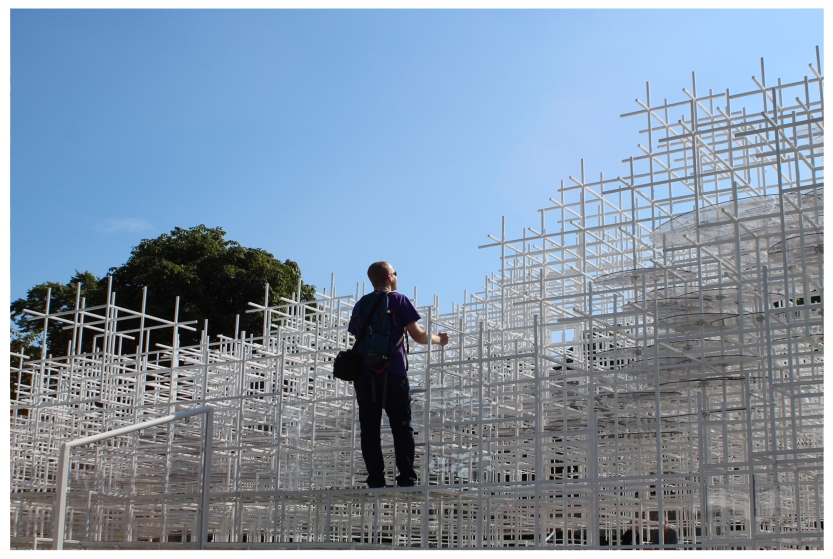

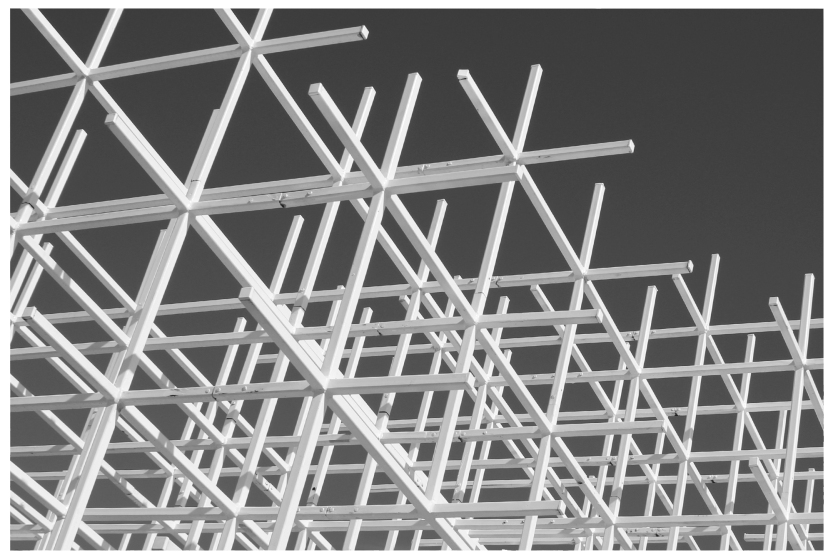


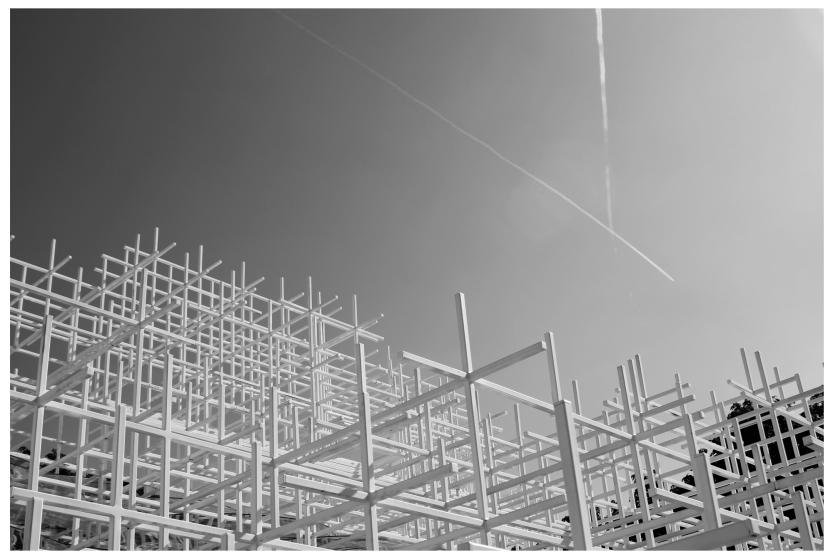
Notes:
1 “Sou Fujimoto Futurospective Architecture” Kunsthalle Bielefeld, 2013. Pg 207.
2 “Sou Fujimoto Futurospective Architecture” Kunsthalle Bielefeld, 2013. Pg 209.
3 “Sou Fujimoto” Phaidon, 2016. Pg 144.
4 “Sou Fujimoto Futurospective Architecture” Kunsthalle Bielefeld, 2013. Pg 164.
This construction is fascinating. So is your blog, such a delight to read and reread the pages you are offering.
LikeLiked by 1 person
Thanks so much Martine, I really appreciate your support.
LikeLiked by 1 person
What a wonderful post…I so wish I could see this installation in person but I think I will miss it as I am not going to London until the summer. But imagine, for a grid lover like me 🙂
Thank you for making me travel through your blog and pictures. As a token of how much I appreciate your wonderful blogs, I’ve nominated your blog for the Sunshine Blogger Awards 🙂
You can read more about how to accept it here – https://reinventingrid.com/2018/04/16/sunshine-blogger-award/
A nice way to spread the love of art and architecture we share 🙂 All the best, Ingrid
LikeLiked by 1 person
Hi, thanks for wonderful feedback – and for the nomination. I really appreciate it! Thank you!
LikeLike
Fully deserved, keep up the great work!
LikeLiked by 1 person
Fascinating, simple and complex at the same time.
LikeLiked by 1 person
That paradox is one of the things I find most compelling in great architecture!
LikeLiked by 1 person
Agreed!
LikeLiked by 1 person
Just thinking… if you have time to take a look I’ve written posts on two other buildings which develop that simple / complex paradox – The National Theatre (also in London) and The Casa Das Mudas in Madeira. I’d love to know what you think.
LikeLiked by 1 person
If you send me the links, I absolutely will! Everydaystrangeblog@gmail.com
LikeLiked by 1 person
Cool…
The National Theatre:
https://dynamicstasis.blog/2017/08/02/499/
The Casa das Mudas:
https://dynamicstasis.blog/2017/06/09/the-casa-das-mudas/
I hope you find them interesting.
LikeLike
It is very cool!
LikeLiked by 1 person
Thanks!
LikeLike
This looks really interesting but no doubt it’s one of those pieces where you really need to see it to appreciate it. I can wrap my head around the concept, the overpowering magnitude of all that white sort of makes my head ache a little though.
LikeLiked by 2 people
Fair point!
LikeLike
Would you say there’s much of a difference between how it looks when standing next to it and how it looks through a camera lens?
LikeLiked by 2 people
Hmm, I’m not sure. I think the photos do give a good representation of the reality – but in this case the building is very unconventional, so that makes it rather difficult to ‘read’, I think.
The other interesting aspect is that this ‘building’ only existed for a few months – so we can’t go back for another look. I really enjoy that notion!
LikeLike
Beautiful!The way it blends is just superb.
Art is beautiful.
LikeLiked by 1 person
I like be the concept of a temporary building. Love the mathematical nature of it!
LikeLiked by 1 person
That’s some amazing photographs! Loved the last photo’s caption tho xD
Good job, hope to see more from you!
Also, I’d really aplreciate if you have a look at my rebuilt blog 😀
http://www.thehonestfabler.com
LikeLiked by 1 person
Thanks very much.
I’ll check it out!
LikeLike
Bit of a nightmare if it rains tho
LikeLiked by 1 person
Jist bring a guid brolly.
LikeLike